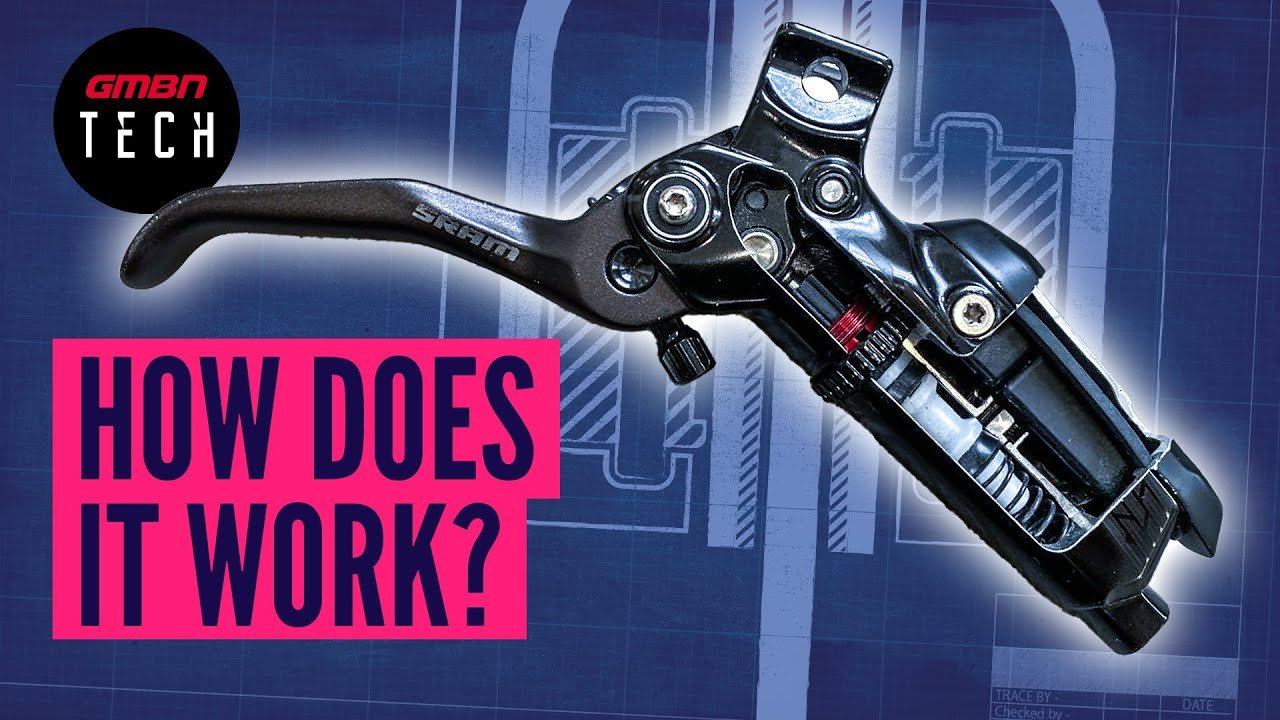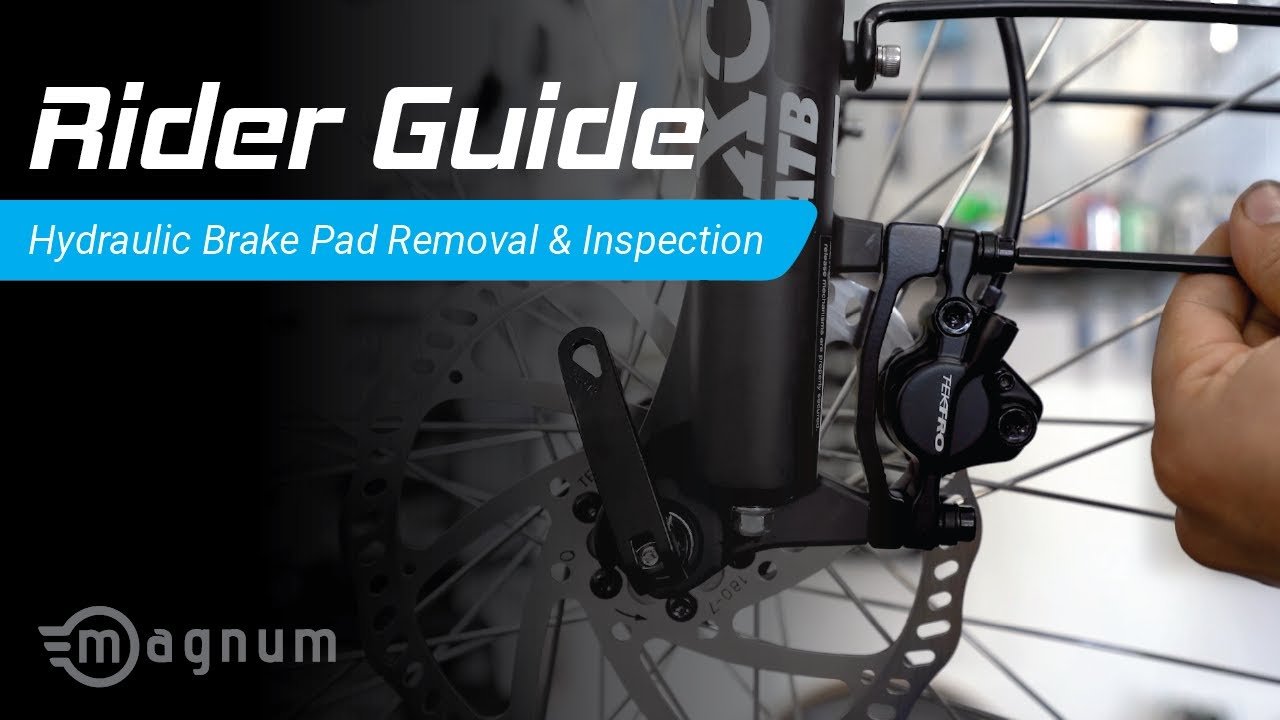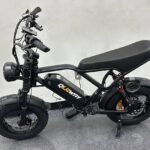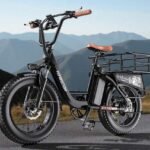
E-bike hydraulic brakes are amazing until they stop working properly. These powerful braking systems can last thousands of miles with the right care, but neglect them and riders might find themselves with spongy levers or reduced stopping power at the worst possible moment.
Maintaining hydraulic brakes on electric bikes involves regular inspections, keeping components clean, replacing brake pads when worn, and bleeding the system annually to ensure optimal performance. Most e-bike owners can handle basic maintenance tasks themselves with simple tools and a bit of know-how.
The good news is that hydraulic brake maintenance isn’t rocket science. With proper cleaning techniques, timely pad replacements, and understanding when to bleed the system, riders can keep their e-bike brakes running smoothly for years while avoiding costly repair shop visits.
Understanding E-Bike Hydraulic Brake Systems
E-bike hydraulic brakes use fluid pressure to transfer force from the brake lever to the brake caliper. This system offers more power and better control than traditional brake cables, making it perfect for heavier electric bikes.
Key Components and How They Work
The hydraulic brake system has five main parts that work together. The brake lever sits on the handlebars where riders squeeze to stop. Inside the lever is a master cylinder filled with hydraulic fluid.
When someone pulls the brake lever, it pushes hydraulic fluid through a sealed hose. This fluid travels to the brake caliper at the wheel. The caliper contains pistons that push brake pads against the rotor.
Main Components:
- Brake lever – Controls the system from handlebars
- Hydraulic fluid – Transfers pressure through the system
- Brake hose – Carries fluid from lever to caliper
- Brake caliper – Houses pistons and brake pads
- Rotor (brake disc) – Metal disc that spins with the wheel
The rotor is a metal disc attached to the wheel hub. When brake pads squeeze the rotor, friction slows the wheel down. This happens almost instantly because fluid doesn’t compress like air does.
Hydraulic vs Mechanical Disc Brakes
Mechanical disc brakes use brake cables instead of hydraulic fluid. A rider pulls the brake lever, which pulls a cable that moves the brake caliper. This is the same system used on older bikes.
| Feature | Hydraulic Disc Brakes | Mechanical Disc Brakes |
|---|---|---|
| Power | High stopping power | Moderate stopping power |
| Feel | Smooth, consistent | Can feel spongy |
| Maintenance | Less frequent | More cable adjustments |
| Cost | More expensive | Less expensive |
Hydraulic systems give much better stopping power with less finger effort. The brake lever feels firm and consistent every time. Mechanical systems can feel different as cables stretch or get dirty.
Cable systems need more maintenance because cables can fray or stretch. Hydraulic systems stay consistent longer but need special tools for repairs.
Advantages for Electric Bikes
Electric bikes are heavier than regular bikes, often weighing 50-70 pounds. They also go faster with motor assistance. This means riders need more stopping power to brake safely.
Hydraulic disc brakes handle the extra weight and speed much better than other brake types. They provide consistent stopping power even when the bike is fully loaded with cargo or a rider.
The smooth feel helps riders control their braking better. This is important when riding at higher speeds on electric bikes. Quick, panic stops are easier to control with hydraulic systems.
Electric bikes often get ridden more frequently and in different weather. Hydraulic brakes work well in rain and don’t lose power when wet like rim brakes do.
Routine Inspections and Preventive Maintenance
Regular checks of brake pad thickness, hydraulic fluid levels, and rotor condition help catch problems before they become dangerous. Listening for unusual sounds during braking can also reveal issues that need immediate attention.
Checking Brake Pad Wear
Brake pad wear is the most common maintenance issue riders face with hydraulic systems. Worn brake pads can damage rotors and create safety hazards if left unchecked.
Most hydraulic brake pads have wear indicators – small grooves or lines that disappear when replacement is needed. When pads reach 1-2mm thickness, it’s time for new ones.
Check pad wear monthly by looking through the caliper or removing the wheel. New pads typically measure 3-4mm thick. Replace them when they hit the minimum thickness to avoid metal-on-metal contact.
Signs of uneven wear include:
- One pad thinner than the other
- Grooves or channels in the pad surface
- Shiny or glazed appearance
- Cracks or chunks missing
Monitoring Brake Fluid Levels and Leaks
Brake fluid powers the entire hydraulic system, so maintaining proper levels is critical. Low fluid often indicates leaks that can cause complete brake failure.
Check the reservoir monthly – it should be between the minimum and maximum lines. Dark, dirty fluid needs replacement even if levels look good.
Brake fluid leaks appear as oily spots near calipers, brake lines, or the master cylinder. Even small leaks can let air into the system, making brakes feel spongy.
Common leak locations include:
- Caliper piston seals
- Brake line connections
- Master cylinder reservoir
- Banjo bolts at calipers
Wipe components clean, then check again after a few rides to confirm any suspected leaks.
Inspecting Rotors and Calipers
Brake rotors need regular inspection for warping, scoring, and contamination. Damaged rotors reduce braking power and can cause dangerous vibrations.
Run your finger across the rotor surface – it should feel smooth without deep grooves. Warped rotors will show visible wobbling when the wheel spins.
The brake caliper should move freely and center properly over the rotor. Sticky pistons cause uneven pad wear and poor performance.
Check for these rotor issues:
- Thickness under manufacturer minimum
- Heat discoloration (blue or purple tint)
- Oil contamination from chain lube
- Cracks radiating from bolt holes
Listening for Grinding Noises or Changes in Braking Power
Grinding noises during braking usually mean pads have worn down to metal backing plates. This damages rotors and requires immediate attention.
Normal hydraulic brakes should feel firm and consistent. Spongy lever feel often indicates air in the system or low hydraulic fluid levels.
Pay attention to these warning sounds and sensations:
- High-pitched squealing (glazed pads)
- Metal grinding (worn pads)
- Lever feels soft or spongy
- Reduced stopping power
Test brakes before every ride by squeezing levers while stationary. They should engage smoothly without excessive lever travel or unusual noises. Any changes in brake maintenance requirements deserve immediate investigation.
Cleaning and Adjusting Brake Components
Clean brake components work better and last longer than dirty ones. Proper cleaning removes dirt and oil that can hurt stopping power, while good adjustments make brakes feel smooth and responsive.
How to Clean Brake Pads, Rotors, and Calipers
Start by removing the wheel to get better access to brake discs and calipers. Never touch the rotor surface with bare hands since skin oils can contaminate the metal.
Use rubbing alcohol and a clean cloth to wipe down the rotor. Spray the alcohol on the cloth, not directly on the brake parts. This prevents liquid from getting into places it shouldn’t go.
Cleaning Steps:
- Remove wheel for better access
- Clean rotor with alcohol and lint-free cloth
- Wipe calipers with damp cloth to remove dirt
- Check brake pads for oil or debris
- Let everything dry completely before reassembly
For brake pads, look for shiny spots or dark stains that show oil contamination. Light sanding with fine sandpaper can remove surface contamination, but heavily soiled pads need replacement.
Clean the calipers with a barely damp cloth to remove built-up dirt and grime. Avoid getting water near the brake fluid reservoir or hydraulic lines.
Preventing Contamination for Consistent Stopping Power
Chain lube and bike cleaners are the biggest enemies of clean brake components. They reduce friction between brake pads and rotors, making stops feel weak and unpredictable.
Be careful when applying chain lube near the rear brake. Cover the rotor and brake pads with cardboard or plastic before spraying anything nearby.
Store the bike where brake discs won’t collect dust, oil, or other debris. A garage or covered area works better than leaving it outside where road grime can settle on everything.
Common Contaminants:
- Chain lubricant overspray
- Bike wash soap residue
- Road salt and grime
- Fingerprints and skin oils
Clean hands and tools prevent transferring oils to brake surfaces during maintenance. Even small amounts of contamination can cut braking power by 30% or more.
Replace brake pads if cleaning doesn’t restore full stopping power. Contaminated pads rarely return to like-new performance even after thorough cleaning.
Adjusting Brake Lever Reach and Pad Alignment
Most hydraulic brake levers have a reach adjustment screw near the pivot point. This changes how far riders need to stretch their fingers to grab the brake lever comfortably.
Turn the reach screw clockwise to bring the lever closer to the handlebar. Turn it counterclockwise to move the lever further away. Make small adjustments and test the feel before making more changes.
Pad alignment keeps brake pads hitting the rotor evenly across their surface. Misaligned pads wear unevenly and can cause squealing or poor stopping power.
Loosen the caliper mounting bolts slightly, then squeeze the brake lever firmly. While holding the lever, tighten the bolts back down. This centers the caliper over the rotor automatically.
Check that both brake pads contact the rotor at the same time when squeezing the lever gently. If one pad hits first, the caliper needs repositioning or the system might need bleeding to remove air bubbles.
Brake Pad Replacement and Rotor Care

Brake pads typically need replacement every 500-1000 miles depending on riding conditions, while rotors require regular inspection for warping or damage. Choosing the right pad material and maintaining clean rotors ensures optimal braking performance and safety.
When and How to Replace Brake Pads
Most riders need new brake pads when they hear squealing sounds or feel reduced stopping power. Worn brake pads show clear warning signs that shouldn’t be ignored.
Check the brake pad thickness monthly by looking through the caliper. When pads measure less than 1mm thick, it’s time for replacement.
Signs brake pads need replacement:
- Squealing or grinding noises
- Reduced braking power
- Pad thickness under 1mm
- Metal backing plate visible
The replacement process starts with removing the wheel and brake pads from the caliper. Push the pistons back slowly using a plastic tire lever or specific brake tool.
Install new pads by reversing the removal process. Make sure they sit properly in the caliper before reassembling everything.
Break in new brake pads with gentle stops for the first 20-30 applications. This helps the pads conform to the rotor surface for better performance.
Choosing the Right Brake Pad Material
Organic pads offer quiet operation and good modulation but wear faster in wet conditions. They work best for casual riders who prioritize smooth, predictable braking.
Metallic pads last longer and perform better in wet weather but can be noisier. They’re ideal for aggressive riders or those who frequently ride in rain.
Sintered pads provide the longest lifespan and best performance in extreme conditions. However, they can wear down rotors faster than other materials.
| Pad Type | Lifespan | Wet Performance | Noise Level | Best For |
|---|---|---|---|---|
| Organic | Short | Fair | Quiet | Casual riding |
| Metallic | Medium | Good | Moderate | All-weather |
| Sintered | Long | Excellent | Loud | Heavy use |
Match the pad material to riding style and conditions rather than just choosing the cheapest option.
Inspecting and Maintaining Rotors
Brake rotors need inspection every few months for warping, scoring, or excessive wear. A warped rotor causes pulsing when braking and reduces stopping power.
Check rotor thickness with calipers – most rotors shouldn’t be used when they’re thinner than 1.5mm. Look for deep scratches or grooves that catch a fingernail.
Clean rotors monthly with isopropyl alcohol and a clean rag. Avoid touching the brake rotor surface with bare hands since oils reduce braking performance.
Replace rotors when they show significant warping, deep scoring, or reach minimum thickness. Bent rotors can sometimes be straightened with special tools, but replacement is often safer.
Bleeding Hydraulic Brakes and Fluid Maintenance
Bleeding hydraulic brakes removes air bubbles that make brakes feel spongy, while proper fluid maintenance keeps the system working smoothly. The process requires specific timing, careful technique with bleed kits, and regular fluid checks to maintain optimal braking performance.
When to Bleed Hydraulic Brakes
Riders don’t always need to bleed their brakes when they think they do. Worn brake pads can make it feel like there’s not enough fluid in the lines, but replacing the pads often fixes the problem without bleeding.
Signs that bleeding is actually needed:
- Brake levers feel spongy or mushy
- Levers pull too close to the handlebars
- Air bubbles visible in brake lines
- Brake fluid looks dark or contaminated
Air gets into the system through loose connections, worn seals, or during brake service. When air mixes with brake fluid, it compresses under pressure while the fluid doesn’t.
This compression makes the brakes feel weak and unpredictable. Most e-bike hydraulic systems need bleeding every 1-2 years depending on riding conditions and usage.
Using a Bleed Kit: Step-by-Step Guide
Each brake manufacturer has specific bleeding procedures that mechanics should follow exactly. Taking shortcuts with bicycle disc brakes often leads to problems since they’re different from car brake systems.
The process starts with filling syringes with the correct brake fluid. After drawing fluid into the syringe, pull the plunger to draw 100% of fluid back before removing air bubbles.
Key bleeding steps:
- Attach bleed fittings to brake caliper and lever
- Create slight vacuum pressure – don’t pull hard on plunger
- Push fluid through system from bottom to top
- Watch for air bubbles in clear tubing
- Close bleed ports and test brake feel
Creating too much vacuum can suck air past the tiny fittings into the brake lines. This makes the problem worse instead of better.
Topping Up or Replacing Brake Fluid
Brake fluid absorbs moisture over time, which lowers its boiling point and reduces braking power. Most hydraulic brake fluids should be replaced every 2-3 years even if the brakes feel fine.
Fluid compatibility is critical. DOT fluids and mineral oils cannot be mixed, and different brands may have different formulations. The safest approach is using only the brake manufacturer’s recommended fluid.
Topping up fluid reservoirs requires clean conditions and proper technique. Remove the reservoir cap carefully to avoid contaminating the fluid with dirt or debris.
Fill to the maximum line but don’t overfill, as fluid expands when heated during braking. Always dispose of old brake fluid properly at recycling centers since it’s toxic to the environment.
Troubleshooting and Pro Tips for Long-Term Brake Health
Proper brake system troubleshooting prevents dangerous failures and costly repairs down the road. Smart maintenance habits and knowing when to call professionals can extend your e-bike brake components’ lifespan significantly.
Identifying and Fixing Common Issues
Spongy brake levers usually signal air in the hydraulic lines or worn brake pads. When riders squeeze the lever and it feels mushy, they should first check if the pads need replacement before assuming a bleed is necessary.
Squeaking brakes often frustrate e-bike owners, but it’s frequently normal. Disc brakes are susceptible to squeaking under certain conditions, especially when wet. Switching to resin or organic pads instead of metal ones can reduce noise.
Brake drag creates constant resistance while riding. This happens when pads don’t retract properly from the rotor. Riders can fix minor rotor bends with a truing tool, but severely warped rotors need replacement.
Common brake problems and solutions:
- Lever travels too far – Replace worn pads or bleed system
- Grinding sounds – Pads worn to metal backing, replace immediately
- Pulling to one side – Clean or replace contaminated pads
- No braking power – Check for hydraulic leaks or air bubbles
Professional Maintenance: When to Seek Help
E-bike brake maintenance becomes complex when hydraulic bleeding is required. Professional mechanics have specialized tools and experience that prevent costly mistakes during brake system servicing.
Riders should seek professional help when brake cables show fraying or when hydraulic lines leak fluid. These issues require precise techniques and manufacturer-specific bleeding procedures that vary between brake brands.
Signs that demand professional attention:
- Brake fluid leaking from calipers or levers
- Complete brake failure or extremely long lever travel
- Cracked brake rotors or severely contaminated pads
- Any work involving brake cable routing through the frame
Most bike shops charge $40-80 for hydraulic brake bleeding. This investment prevents the frustration and potential safety risks of DIY bleeding gone wrong.
Upgrading Brake Components for Enhanced Performance
Upgrading brake components can dramatically improve stopping power and reduce maintenance frequency. Higher-quality brake pads last longer and provide better modulation than basic versions.
Riders who frequently ride in wet conditions benefit from upgrading to larger rotors. Moving from 160mm to 180mm rotors increases stopping power by roughly 25% without adding significant weight.
Performance upgrade priorities:
- Premium brake pads – Organic compounds for quiet operation, metallic for longevity
- Larger rotors – Better heat dissipation and increased stopping power
- Braided brake lines – Improved lever feel and durability over standard hoses
Quality hydraulic brake components from established manufacturers offer better long-term reliability. Mixing different brands’ parts in the same brake system creates compatibility issues and potential failures.
Final Thoughts
Taking care of hydraulic brakes on an e-bike doesn’t have to be scary. With regular checks and basic maintenance, riders can keep their brakes working well for years.
The key things to remember are simple. Check brake fluid levels monthly. Look for leaks around the calipers and brake lines. Replace brake pads when they get thin.
Most e-bike owners can handle these basic tasks:
- Monthly fluid checks – Takes 2 minutes
- Pad inspection – Quick visual check every few weeks
- Cleaning rotors – Simple wipe-down with isopropyl alcohol
- Lever feel testing – Squeeze to check for sponginess
Professional bleeding should happen every 1-2 years. This keeps the brake system running smooth and safe.
Good hydraulic brake maintenance saves money in the long run. Catching small problems early prevents expensive repairs later. Plus, well-maintained brakes give riders confidence on every ride.
Remember that e-bikes are heavier than regular bikes. They also go faster. This means the brakes work harder and need more attention.
When in doubt, visit a local bike shop. A quick professional check costs less than replacing damaged brake parts. Most mechanics can spot problems that riders might miss.







![Electric Bike Charging Guide ([year]): Expert Tips for Battery Care, Safety & Long Life Electric Bike Charging Guide](https://goebikelife.com/wp-content/uploads/2025/04/EBike-Charging-Guide-768x512.jpg)



